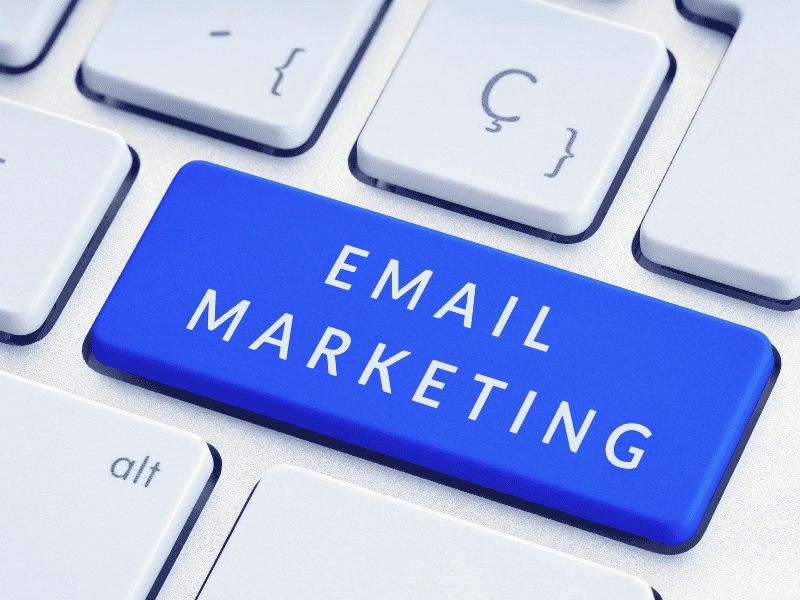The new normal that gyms exist in post-pandemic makes the boom times prior to 2020 seem like a distant memory.
Times are much tougher now.
The United States is officially in a recession and people are making cutbacks. But there’s also a bright side; after two years of COVID, people are more conscious than ever of their need to be physically and mentally fit. Your gym can capitalize on that need, but only if you market yourself the right way.
In this article, I’ll lay out seven promotion ideas that will bring in new gym members despite what’s going with the economy.
Promotion doesn’t have to involve spending a lot of money. But they will cost you time and commitment. You need to be focused, determined, and disciplined to promote your business day in and day out. It is that consistency that will get results.
Here’s an overview of the 7 promotion ideas:
- Digital Marketing campaign
- Direct Mail campaign
- Business to Business marketing
- Car Wrapping
- Email campaign
- Refer and Receive campaign
- An active blog page
The Limits of Promotion
While marketing is a necessary part of acquiring your new members, it is not going to close the deal. The purpose of marketing is to generate leads. It is then up to your sales processes to cultivate those leads, turn them into appointments, presentations, and, then, members.
Promotion and marketing provide brand awareness, it connects you to potential new members and it gets you visible in the market. If done right, it will get people to ask you why they should come to your gym rather than some other place. It’s then up to you and your staff to win them over. If you don’t have the ability to do that, then the best marketing in the world will be a waste of time and money.
Go here for proven tips on how to close more gym sales [[link to 4 Ways to Close More Gym Sales article]].
Reverse Engineer Your Numbers
Reverse engineering means that you start at the goal and work backward. So, let’s say that you want to get 25 new gym members. You can work backward from that figure to identify just what you need to do to achieve it.
The fitness industry closing rate average is 50 percent. So, that means that, to get 25 new members, you will need to do 50 sales presentations. Yet not every presentation you book will end up in the person showing up for a presentation. Again, the industry average is 50 percent.
So, to get 50 presentations, you and your team will have to book 100 appointments.
The lead conversion to appointment rate will vary, but, again the industry average is around 50 percent. That means to get 100 appointments, you will need 200 leads.
We now know that you will need to generate 200 leads to achieve your target of 25 new members.
The fitness industry average cost per member is $100. So, you should expect to have to invest $2500 into your marketing budget to realize 25 new members.
Digital Marketing
Your gym absolutely has to have a vibrant social media presence. That means that you have to feature on Facebook.
Your digital marketing strategy should begin with identifying your buyer persona. Who are you targeting your message to?
You don’t just want to be marketing to people who are interested in fitness. You need to drill down. If you’re a powerlifting gym, then target directly to powerlifters. Crossfit gyms will market to Crossfitters and so on. Even if you are a general fitness center, you need to target your different ad campaigns to market niches within your overall market.
The next step in developing your digital marketing promotional campaign is to identify your offer. You don’t want to just tell people ‘Here we are, come check us out’. Rather, you should have an incentive to encourage them to take action now. It could be gym promos like a 33 percent member discount, five free personal trainer vouchers or a free towel and water bottle.
I recommend starting with Facebook ads. These are a highly cost-effective way to target niche markets. In designing your ad, rather than focusing on the features that you provide, do your research to identify the pain points of your target group and then show them clearly how you will solve them.
If the viewer of your ad gets the sense that you understand their problems and where they are coming from, they are far more likely to sit up and take notice.
You should follow the 40/40/20 rule when running a Facebook ads campaign. Forty percent of the success of your campaign will be due to your ability to understand your market and identify their pain points, and put the right message in front of them. Facebook targeting options allow you to do this to a degree that we could only dream about in times gone by.
The next forty percent of your success comes down to your offer. It needs to be relevant to the audience and enticing enough to get them to take action.
The final twenty percent of your success is due to your copy and your creativity. This is the combination of the words you choose, the images and video you include, and all of the other design elements of your ad.
The 40/40/20 rule helps to focus on what’s really important in a Facebook ad campaign. Rather than spending too much effort on a clever design, make sure that the foundation for success is set with a clear identification of your market, the problems they face, and the solutions that you are offering to them.
The marketing rule of seven tells us that, on average, a customer needs to see or hear your message seven times before they will take action. That means that you can’t expect good results from short campaigns that don’t repeatedly get your ad in front of your target customers. You need to be patient with your Facebook ad campaign and budget for regular follow-ups to your ads.
The best way to do this is to capture leads from your Facebook ads. This takes the person off Facebook, where you have to pay to reach them, and onto your email list, which costs you nothing to make further contacts.
Direct Mail
It may seem antiquated to talk about direct mail as a marketing strategy in the digital age. Yet it is a proven lead generation strategy that you do not want to neglect. Direct mail is a great marketing tool when it is layered with other things.
On its own, a direct mail is not going to be that effective. It should be one layer of your promotional strategy, along with all the others covered in this article. To work, you need to run a direct mail campaign for a minimum of 90 days. Over that period, you should send out three different messages.
The first message should be an introductory, or warm-up message. It should still, though, have a call to action on it. The second message will contain a slightly more aggressive call to action. The third message will be built around FOMO – it will have a scarcity, don’t miss out angle to it.
A good marketing campaign will involve sending out between five thousand and ten thousand mailers every month. That makes a total of between fifteen and thirty thousand mailers over the entire three-month campaign.
Have the mailers delivered within a three to five-mile radius around your gym.
The mailers should include a QR code or dedicated phone line to help you source your leads. That will help you to analyze the results of the campaign to determine if it has been successful.
You should between $500-$7000 for a 90-day direct mail campaign.
The average return in terms of new members on a 90-day campaign is about thirty. However, your sales staff should be trained to ask each of those new members for five referrals. They may only get three, but that will give you another 90 leads.
Let’s say that you manage to close 20 of those new leads. Of course, you will also be getting referrals off those new members, leading to an infinite return on your investment.
Let’s assume, though, that your direct mail campaign has netted your 50 (30 off the mailer and 20 from referrals) new members. If they are each paying $100 per month, that’s a $60,000 return on your $5-7000 direct mail investment.
Realize that your direct mail campaign will generally not yield great results on its own. Not that many people will walk into the gym with a mailer in their hand saying ‘Sign me up’. Rather, direct mail is just one layer of a number of different avenues of getting your business into the consciousness of the potential new customer.
Business to Business Marketing
With business-to-business marketing, your gym is going to market directly to other businesses. Those businesses will be complementary to yours without being direct competitors. That means looking for businesses that are in the wellness space.
Wellness is a broad industry category. It includes …
- Juice Bars
- Massage Parlors
- Chiropractor
- Spa
- Acupuncture Center
- Cryotherapy Centers
- Physical Therapists
- Hair Salons
You know that people who visit these places are prepared to invest good money in looking after their body.
So, how do you establish relationships with these complementary businesses?
The first step is to get the decision maker at the complementary business to experience your gym. Provide them with a free month’s membership. Then make sure that they are receiving a top-notch experience. That way they will be able to speak with passion from their own experience to their clients about your business.
Oftentimes, the decision-maker is not the person who is dealing with customers day to day. So, you should also offer free membership to that front person. This is often more impactful than offering free membership to the manager (though you should do both). A saving of a hundred bucks for a month’s gym membership means a lot more to a counter server who’s making $15 an hour than it does to their boss who’s bringing in a six-figure salary.
At each of the complementary businesses, you should have a lead box. This is simply a box that people can drop their contact details in to go into a prize draw. The most obvious giveaway is a 6 or 12-month membership.
Don’t just limit yourself to wellness centers, either. I’ve had success at local restaurants. It’s not uncommon for people to start feeling guilty after they’ve eaten too much dessert. That’s the ideal time to expose them to your services.
Another one to consider is local pizza parlors. You probably won’t get authorization to put a free week’s membership flier on every pizza box, but you will have a good shot with a locally operated store.
If the complementary business’ staff are talking enthusiastically about your business and keeping your lead box in a prominent position, you should be getting dozens of new leads from them every week. It’s then up to you to empty the boxes every few days and have to funnel those leads to your sales team. Make sure that they are well trained on how to turn the leads into appointments and you will end up with new members.
Business-to-business marketing will only work if the complementary business gets something worthwhile out of it. After all, not many are going to go out of their way for you simply out of the goodness of their heart. So, when you approach them, have ideas of cross-promotions that they will benefit from.
In the case of the pizza parlor, you could give discount vouchers to members. This actually provides you with a teachable moment with your members regarding balanced nutrition and not trying to eat clean 100 percent of the time.
Car Wrapping
This is one of the less conventional gym promo ideas on the list. It will cost you about $2,000 to get your car wrapped. That is a one-time investment. The beauty of wrapping your vehicle is that it is a mobile form of advertising. Your vehicle, in effect, becomes a mobile billboard for the business.
If you want to park your wrapped vehicle in high-traffic areas that the people within a 3 to 5-mile radius of the gym frequent. Examples are the farmer’s market, local sports events, and concerts.
So what should the wrapping of the vehicle look like?
Most importantly, the gym branding should be clearly displayed. It should also have the phone number. This should be allowed to be seen from a distance. The third key element is the gym’s website address.
I’ve had gym owners balk at the idea of spending $2500 to wrap a car. Some have thought that it’s an unnecessary extravagance that the gym doesn’t need. Yet, I can tell you from areas that this kind of promotion really does work. I would typically have the gym promo vehicle wrapped once every four years. That means it was costing me $500 a year. My typical net profit per member is around $534. That means that I only had to generate one new member a year as a result of the marketing vehicle to break even on the investment. In many cases, wrapping your vehicle can also be a tax write-off as well.
As I’ve been stressing throughout this article, all of your promotional streams integrate and work together to impel potential members to make an inquiry that makes it quite difficult to say exactly how many new members have come from the raptor vehicle. What I do know is that every year, I would have at least 50 to 75 people who specifically mentioned the wrapped vehicle when they were asked why they chose us over another gym.

Email Campaign
Your email list is a collection of contacts from people who have expressed some kind of interest in your business. As such, they are potential members. They may not be ready to sign up today but, so long as you continue to nurture them, they may be someday.
Typically, you need to make between seven and 10 contacts with a person before they are ready to come in for an appointment. Those contacts might not all be through email. The person may have received the direct-mail, seen the wrapped vehicle, noticed your cross-promotion with a complementary business, and then received three emails from you. So, again, we see all of the promotional layers working together to influence the mindset of your potential new member.
You can build your email list through digital marketing, your lead campaigns, and all of the other layers of promotion that you are using. You should also collect emails from walk-ins and guest members. Have a sign-in register for these people. It’s a good idea to fill in a ‘dummy’ contact at the top of the page that includes a phone number and email as most people will take the lead from what else they see on the page.
Of all the leads you are collecting through your mail drops, your complementary business promotions, and digital marketing efforts, you should be able to convert 15-20 percent. The other 85 to 90 percent do not suddenly become dead leads. All it means is that they are not ready to buy yet. Your job is to continue nurturing those leads and the way you do it is through email.
The key to successful email marketing is to prevent your leads from unsubscribing. The reason that people unsubscribe is that they do not see any value in the message. Your job is to speak to that person in such a way that they recognize the value of what you’ve got to say.
Build your email campaigns around the time of year or an important event that is taking place. For instance, if it’s springtime, build the campaign around the Summer Shred, with tips and tricks to lose the winter pounds and get ripped for the beach.
Don’t only use text in your emails. Embed videos featuring your trainers providing immediately actionable tips on nutrition and working out. These should showcase the personality of the trainer and the coolness of the gym as a backdrop.
You want the people who receive your emails to be impressed that you are sharing valuable information with them even though they aren’t a member. Of course, at the end of every email you will have a call to action.
Your goal should be to build an email list that is at least 10 times the size of your gym membership. Remember, that it’s all about the numbers. So if you have 10,000 people on your email list, a one percent response to a campaign will generate a hundred new members. Of course, you’ll then work to get three referrals from each of those people, further building your list.
In addition to your regular information-based emails, I recommend growing and the occasional special offer email. This can be timed to coincide with special events such as Black Friday or Cyber Monday. The goal is to get the person to get back to you about a special offer. To make this happen, please tell them that you got a special offer reserved especially for them that you’re not letting out to the general public. Tell them it expires in 24 hours and then give them the contact details to get back to you.
Refer and Receive Campaigns
I’ve been talking about getting referrals right throughout this article. Those referrals, though, are point-of-sale referrals. However, you should also run referral campaigns within the gym. These are targeted toward your existing members. You offer them something valuable in return for referral leads.
The great thing about these referrals is that they provide you and your sales team with the power of a third-person referrer who the lead knows and trusts. That makes the selling job that much easier.
Build your refer and receive campaigns around the seasons or events that are coming up, just as you would any other campaign. Run the competition as a prize draw, choosing a prize that’s going to be enticing. For example, if it’s springtime, why not buy a barbecue grill? Or if it’s the beginning of the year, you could buy a couple of Superbowl tickets. Whatever it is that you decide upon, make sure that it will have wide appeal to a cross-section of your membership.
Whatever it is that you buy, you need to display it right in your lobby for every member to see every time they come in. Tie it up in a big bow with all the wrappings, and plenty of promotions about the campaign.
To enter into the competition, members need to provide you with three referrals. If they had nine names, they could enter three times!
When I’ve run refer and receive campaigns in the past, I’ve ended up with a ton of good leads. But, on my first campaign, a lot of those leads were pretty low quality. I soon cottoned on that members were just jotting down any old contacts in order to be able to enter the prize draw.
On future campaigns, I made a point of stressing to members that, to be fair, they need to provide us with quality leads, otherwise the prize draws wouldn’t be viable for us. From then on, the quality of the leads was no longer a problem.
An average refer-and-receive campaign would cost around $750 including the cost of the prize and the promotion around it. Yet, it would garner around 2000 leads. Of those, around 50 would become members straight away. The other 1970, would go onto the email list to be nurtured until they are ready to buy a membership.
To be successful, you need to build plenty of buzz around the campaign. Be excited about it, get your staff excited about it, and that excitement will translate over to your members.
An Active Blog Page
Having an active blog page is a great way to get your gym known online. Well-researched, authoritative articles will also build trust in the marketplace. Provide articles that go beyond the usual surface-level fitness content that you find on most blogs. Learn how to optimize your content for SEO so that your articles appear on the first page of Google searches.
In addition to actionable, informational content, include short (300 words) articles about what’s going on at the gym. Have each of your staff members contribute, along with member guest posts. Mention local points of interest so that you appear high on local gym searches.
Make it your goal to add at least new pieces of content to your gym blog every week. If you don’t have the time or literary skills to do that, consider hiring a freelance fitness writer to do the work for you.
Summary
The seven gym promotion ideas that we’ve covered in this article should be considered as interconnected elements to an all-encompassing strategy to achieve blanket coverage within a three to five-mile radius of your gym. Here’s recap of the seven strategies:
- Digital Marketing campaign
- Direct Mail campaign
- Business to Business marketing
- Car Wrapping
- Email campaign
- Refer and Receive campaign
- An active blog page
By keeping each of these promotional avenues active, you will enjoy a constant stream of new leads which you can then nurture until the time is right for them to become a part of your fitness community.
 Gym Owner Statistics: The State of Gyms, Member Trends, and Usage Data
Gym Owner Statistics: The State of Gyms, Member Trends, and Usage Data




 EN (English)
EN (English)
 JA (日本語)
JA (日本語)